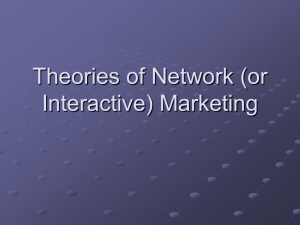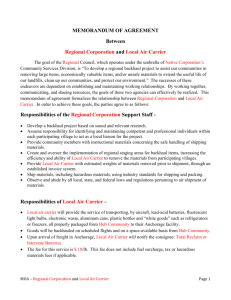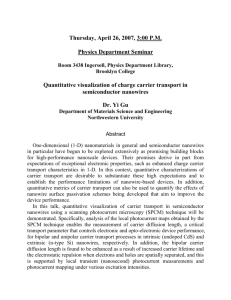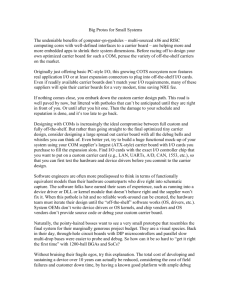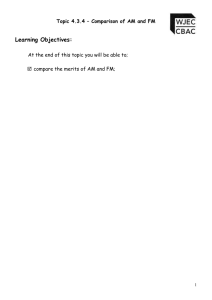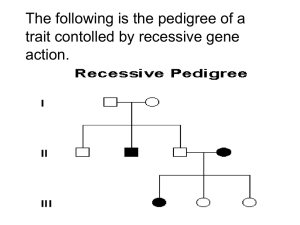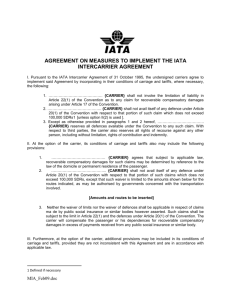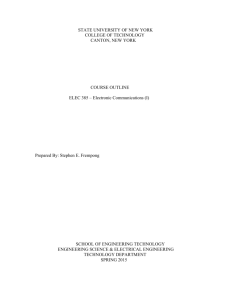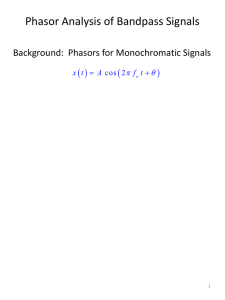Double Side Band Suppressed Carrier
advertisement
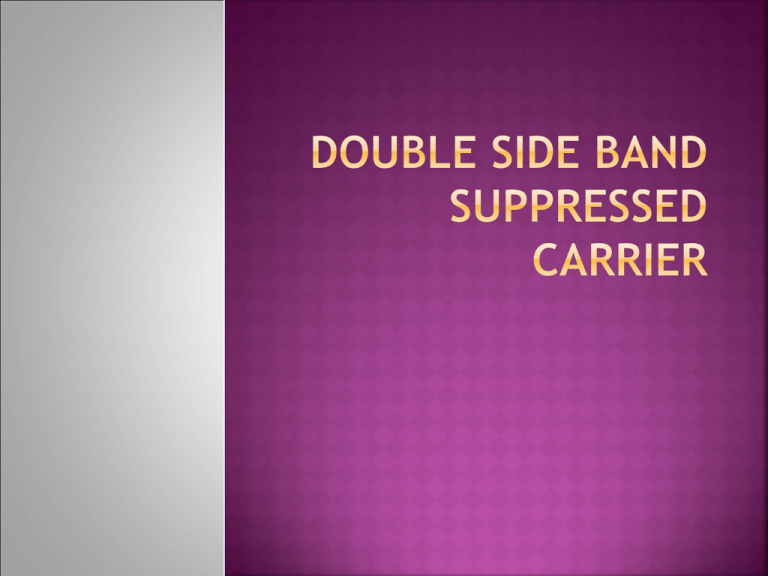
Transmission in which frequencies produced by amplitude modulation are symmetrically spaced above and below the carrier frequency and the carrier level is reduced to the lowest practical level, ideally completely suppressed. The wave carrier is not transmitted but a great percentage of power that is dedicated to it is distributed between the sidebands, which implies an increase of the cover in DSBSC, compared to AM, for the same power used. DSB-SC transmission is a special case of Double-sideband reduced carrier transmission. This is used for RDS (Radio Data System) because it is difficult to decouple. An amplitude modulation wave without the carrier Therefore reducing power wastage, giving it a 100% efficiency rate. The increasing compared to normal AM transmission, which has a maximum efficiency of 50% Efficeincy,E = (Sideband Power)/(Sideband Power + Carrier Power). Spectrum plot of an DSB-SC signal Spectrum plot of an DSB-SC signal Generated by a mixer that consists of an audio source combined with the frequency carrier. The audio frequency and the carrier frequency must be exact otherwise get distortion This is a message signal that one may wish to modulate onto a carrier, consisting of a couple of sinusoidal components. The equation for this message signal is The carrier, in this case, is a plain 5 kHz () sinusoid Name "suppressed carrier" comes about because the carrier signal component is suppressed—it does not appear (theoretically) in the output signal. This is apparent when the spectra of the output signal is viewed:

